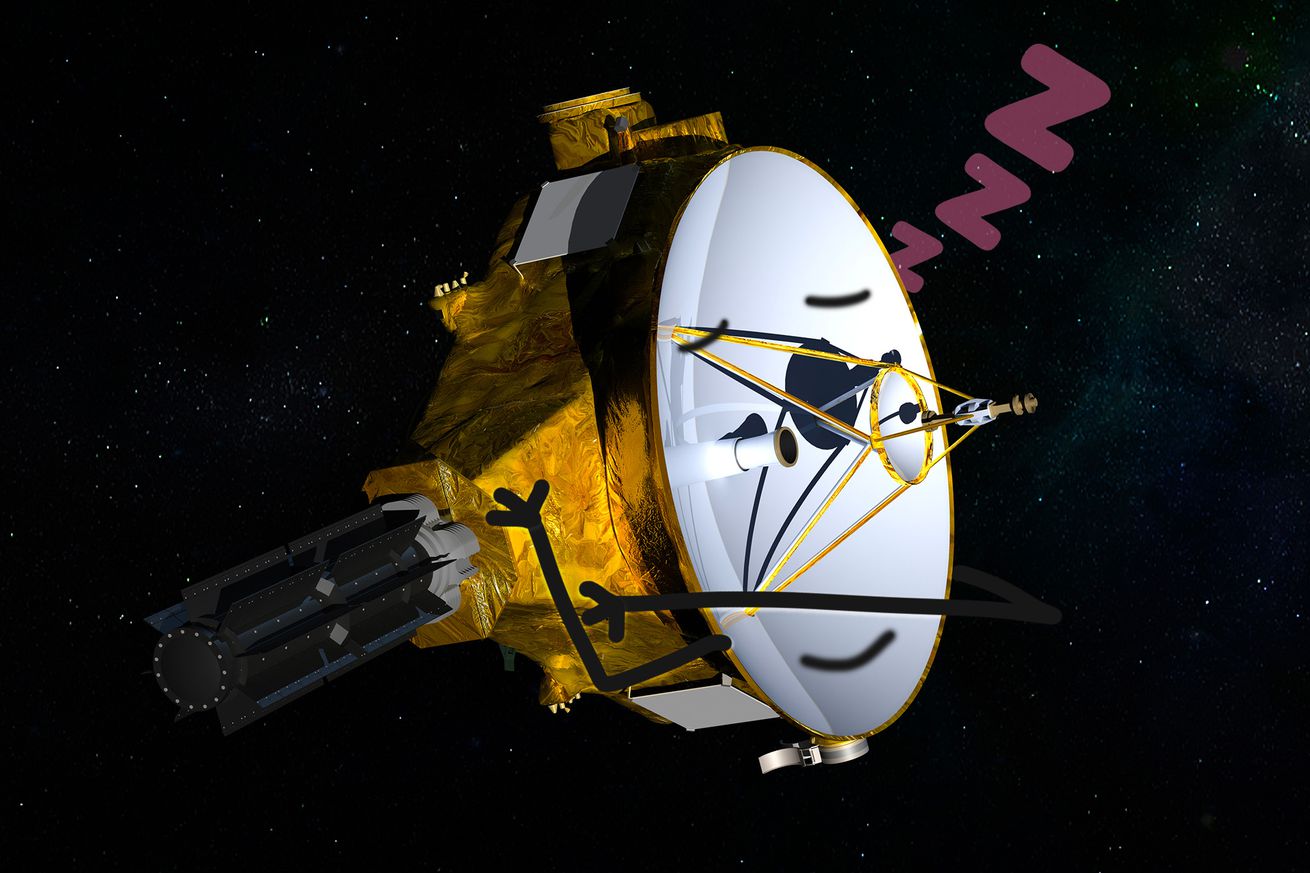
NASA’s New Horizons spacecraft — which famously flew by Pluto in the summer of 2015 — is going to sleep for a little while as it speeds toward its next destination at the edge of the Solar System. On April 7th, the vehicle went into hibernation, a mode in which most of its instruments are powered off. This extended nap, which will last until September 11th, will help keep New Horizons in a safe, stabilized state while reducing the wear and tear on some of the probe’s instruments.
But the biggest benefit of hibernation is that the vehicle will need less oversight from mission control back on Earth, and that’s crucial right now. The New Horizons team is about to prepare for the spacecraft’s next task: flying by an icy body at the edge of the Solar System that’s never been visited before. “It frees up our small team to work on the flyby sequence, and that’s really the main reason we do it,” Alice Bowman, New Horizons’ mission operations manager, tells The Verge.
New Horizons is scheduled to meet up with an object called 2014 MU69 on January 1st, 2019. Discovered in 2014, the icy boulder is found in the Kuiper Belt — the large cloud of tiny space rocks that orbit beyond Neptune. The new flyby target was selected in August 2015, and then finally approved by NASA last year. The encounter will mark the first time we’ve ever visited an object like this in the Kuiper Belt.
Since then, the New Horizons team has been preparing, slightly adjusting the course of New Horizons a few times, for instance. But now the team needs to come up with the spacecraft’s flyby sequence. This includes all the commands that New Horizons will have to pull off on its own before, during, and after the flyby — a time period that lasts from December 25th, 2018 to January 3rd, 2019.
Image: NASA / Johns Hopkins University Applied Physics Laboratory / Southwest Research Institute
First, New Horizons will have to figure out exactly where 2014 MU69 is in the sky, says Bowman. The spacecraft did something similar as it approached Pluto in 2015, but 2014 MU69 is estimated to be only about 10 to 30 miles wide — much smaller than Pluto, which is a little less than 1,500 miles wide. That makes it way more difficult to pinpoint the object’s exact location. To do that, the spacecraft will be taking a whole bunch of pictures of the icy object, up until its final approach. That way, the mission team will know if any last-minute course-correction maneuvers are necessary. “With a really small object, your best pictures are taken very close in,” says Bowman. “You can’t see too much until you’re right on it.”
New Horizons will have to pull off many other commands during its flyby, and figuring those out is a lengthy and complex process. The sleep mode will help make that process easier. When New Horizons is in an active state, it requires a lot of upkeep. It has to be checked on three to four times a week, and new sets of commands have to be uploaded every two weeks or so. And that takes a lot of time. All of those commands have to be reviewed, verified, and tested before they’re sent to the spacecraft. Plus, New Horizons is currently 3.5 billion miles from Earth, so round-trip communication with the spacecraft takes more than 10 hours.
When New Horizons is in hibernation, however, the team has to check in with the spacecraft only every week or so. The spacecraft also sends a monthly status update about its health and safety. But otherwise, the guidance and control systems are turned off, and the team doesn’t have to upload commands. The commands that control the spacecraft last from a week before the hibernation period begins until about five days after it’s over, according to Bowman.
Photo: NASA
This isn’t the first time that New Horizons has gone into hibernation. In fact, it’s been in sleep mode 18 times since its launch in 2006. The last hibernation ended on December 6th, 2014, when the spacecraft was awoken to prepare for the Pluto flyby more than seven months later. New Horizons has stayed awake since then because it’s had quite a lot to do: sending Pluto data back to Earth and spying on some other Kuiper Belt objects. But from now until September, New Horizons doesn’t have much on its plate, which is why it can take this extended nap.
While New Horizons isn’t a stranger to hibernation mode, this time is particularly noteworthy for the mission team, since it somewhat signifies that the primary mission is complete. Now the team is solely focused on 2014 MU69.
“In one sense it feels pretty good, because for a long time Pluto was always been in the future… Now we’re at a point in the mission where we can put it back in hibernation and focus on the next encounter,” says Bowman. “It’s a little bit surreal. We’re all very happy, and it’s a great sense of accomplishment.”

